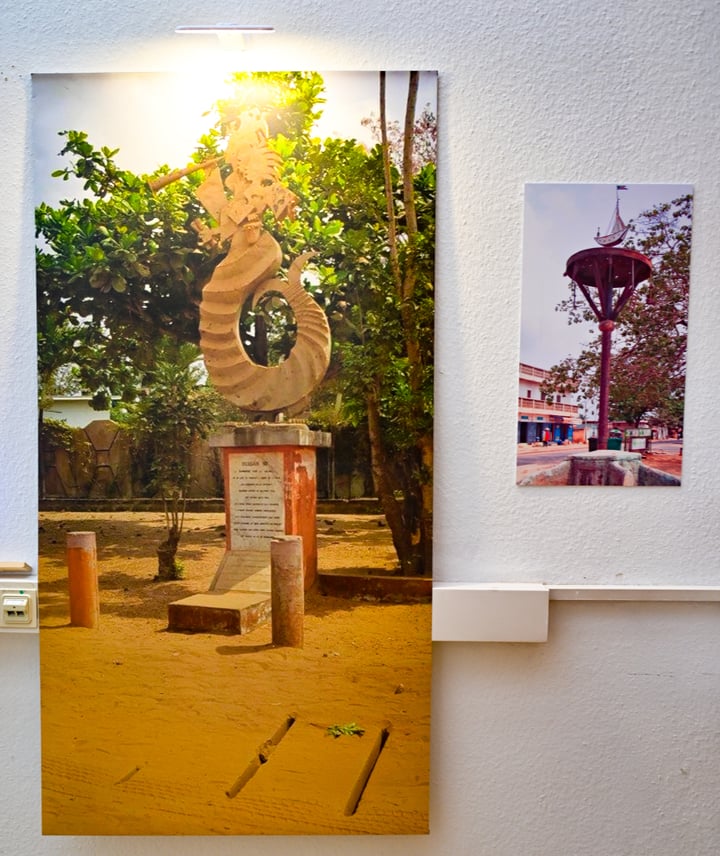
Photo: Joel Abissi, Afrique Décide
9a. The Giant Assin:
Tribute to the Departed (12 December 2012)
DESCRIPTION
This station honours the memory of those lost, creating a cathartic space for reflection. The Giant Assin is thus a work that exists on the margins of the "Slave Route," reflecting the multifaceted memory essential to the historic city of Ouidah. It also serves as a spiritual substrate for the local communities, who have embraced this symbol as a means of communing with those lost to the transatlantic slave trade. This international memorial to the deported innovates within the current heritage landscape of slavery remembrance by drawing on local memory elements—in this case, Vodun. The monument responds to a profound need expressed by descendants: honouring the departed. Far from a victim-centred perspective on the slave trade, it seeks to pay homage and bring peace to wandering souls. Charly Djikou is among the contemporary artists committed to amplifying Africa’s voice through their work. For him, it is also an inescapable mission—to carve history into stone, ensuring that its legacy transcends time.
LITERARY EXCERPT: La Saison de l'ombre, 2013, by Léonora Miano
The ancestors are here, and they are not an enclosure. They conceived a world. This is their most precious legacy: the obligation to invent to survive. The woman says we must mourn the dead. Nine boys from the clan left their bodies so that their spirits could return to their relatives. In this new land of Bebayedi, they will be given a burial. Trunks of makube will be buried in the ground. After nine moons, a house will be built over these graves, each supporting pillar bearing the name of one of the young deceased. It will be the village sanctuary. (p. 228)
9b. Tree of Oblivion:
UNESCO Slave Route Step-2, Ouidah
DESCRIPTION
This station stages the Arbre de l’Oubli (Tree of Oblivion) step 2 of UNESCO Slave Route in Ouidah. According to oral tradition, enslaved Africans were forced to walk around this tree, men nine times, women seven, believing it would make them forget their identities, families, and homelands before being shipped across the Atlantic. The tree was supposed to have the power to collect their memories, to preserve them, so that when they returned, they could find them again. In lieu of a physical tree, a striking monument now marks the location, designed to reflect the spiritual and cultural significance of the tree. It features a towering, curved sculpture, evoking the flowing, maternal form of the Orixa Yemanjá, goddess of the sea and protector of mothers and children. Yemanjá is revered for her ability to heal and transform suffering, mirroring the resilience of those enslaved. The monument’s graceful lines and fluid shape symbolise both the devastation of the past and the enduring hope for recovery and remembrance.
The Arbre de l’Oubli serves as a place of reflection and mourning, reminding visitors of the human cost of slavery and the enduring strength of those who endured it. The monument, linked to Yemanjá, calls us to honour the spirits of those lost and to remember what others were once forced to forget.


